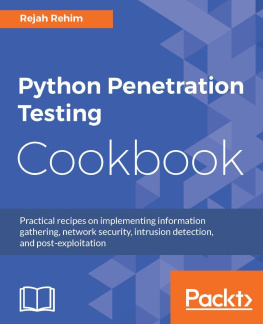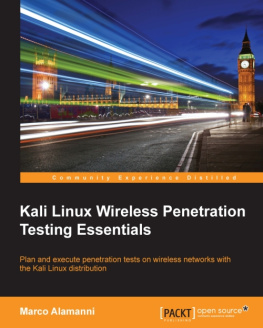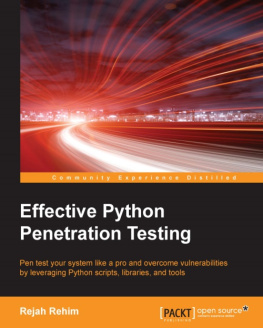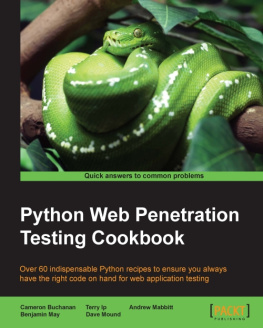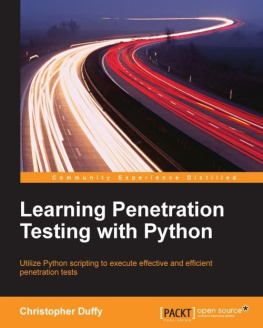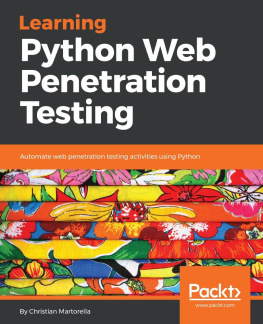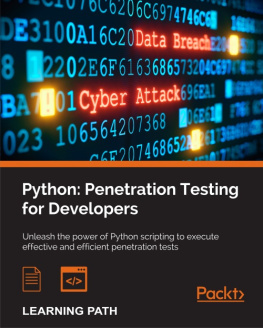All the techniques shown here are based on theory, craft, situations, and team members and I have encountered. They are not, however, clones of organizations' environments that have been assessed. Instead, they point out some examples of common cybersecurity issues and breakdowns in the security strategy that can be taken advantage of. Additionally, these views are of my own and do not represent my current or former employers.
About the Author
Christopher Duffy currently leads cybersecurity and penetration testing engagements globally. He has a specialization in advanced technical testing, including penetration testing and security assessment done to evaluate an organization's security strategy from a malicious actor's perspective. He has worked a lot with both network and system engineering teams to evaluate critical system data flows, and identified areas where controls can be put in place to prevent a breach of sensitive or critical data. His work with multiple organizations has been key to protecting resources based on the information they have held, which has helped reduce risks while maintaining resilient and cost-effective security postures.
Chris has over 12 years of experience in the information technology and security areas, including security consultation, with a focus on business risk. He has helped build advanced attack and penetration teams. The work that his teams have done has encompassed everything from threat modeling and penetration tests to firewall reviews and FedRAMP readiness assessments.
Chris has led, managed, and executed over 400 engagements for Fortune 500 companies, U.S. government entities, medical providers and payers, educational institutes, financial services, research organizations, and cloud providers. For almost a decade prior to private sector work, Chris was a cyber warfare specialist, senior systems engineer, and network infrastructure supervisor for the United States Air Force (USAF).
He has been honored with numerous technical and leadership awards. Some of these include the (ISC)2 Information Security Leadership Award (ISLA) for the information security practitioner category in 2013, the noncommissioned officer of the year (both at the base and wing levels) in 2011, and the top technician within the cyber transport career field for the United States Air Force (USAF) Intelligence Surveillance and Reconnaissance Agency. He is a distinguished graduate of USAF network warfare training and has publications to his credit in SANS Reading Room, Hackin9 magazine, eForensics magazine and PenTest magazine. He holds 23 certifications, a degree in computer science, and a master's degree in information security and assurance.
Acknowlegements
This book is for my wife, Michelle, who has enabled me to better our family and chase my dreams.
For my children, Alexis and Maxwell, whom I hope to build a better future for.
For my Dad for teaching me to lead from the front and introducing the digital world to us, first with a Wang Mainframe and then teaching me how to create hacks for game startup scripts, discovering Bulletin Board Systems (BBS) preWorld Wide Web (WWW) with ProComm Plus and war dialing.
For my Mom, who forced me to stop and smell the roses. She provided me that giant help of encouragement whenever it seemed most appropriate.
Finally, for my friend, Chris Newton, who provided me valuable feedback with regards to what he was looking for in a book like this, and gave me access to his Cisco lab.
About the Reviewers
S. Boominathan is a highly proficient security professional who has more than three years of experience in the field of information security, including vulnerability assessment and penetration testing. He is currently working with an India-based bellwether MNC. He has certifications of and knowledge in N+,CCNA, CCSA, CEHV8, CHFIV4, and QCP (QualysGuard certified professional). He is also a wireless penetration testing expert. Boominathan feels very much privileged to work in his current company. He has worked in various fields simultaneously, such as malware analysis, vulnerability assessment, network penetration testing, wireless penetration testing, and so on.
I would like to thank my parents, Sundaram and Valli; my wife, Uthira; and my brother, Sriram, for helping me review this book thoroughly. I would also like to thank the author and Packt Publishing for providing me with the opportunity to review this book.
Tajinder Singh Kalsi is an entrepreneur. He is the cofounder of and a technical evangelist at Virscent Technologies, with more than seven years of working experience in the field of IT. He commenced his career with WIPRO as a technical associate, and later became an IT consultant cum trainer. As of now, he conducts seminars in colleges all across India on topics such as information security, Android application development, website development, and cloud computing. Tajinder has taught nearly 9,500 students in more than 125 colleges so far. Apart from training, he also maintains blogs (www.virscent.com/blog and http://tajinderkalsi.com/blog/), where he provides various hacking tricks. He has earlier reviewed books titled Web Application Penetration Testing with Kali Linux and Mastering Kali Linux for Advanced Penetration Testing .
You can contact him on Facebook at https://www.facebook.com/tajinder.kalsi.tj, or follow his website at http://www.tajinderkalsi.com/.
I would like to thank the team at Packt Publishing for discovering me through my blog and offering me this opportunity again. I would also like to thank my family and close friends for all the support they have given while I was working on this project.



